From the soles of shoes to contact lenses, from the smartphones we carry around in our pockets to the toothpaste we use every day to clean our teeth, there is no doubt: we live in the plastic era. Everywhere around us, plastic is the most widely-used and long-lasting product, but also one of the most dangerous. From the 1930s up to the first decade of the 21st century, world production of plastic increased from 1.5 million tons to over 280 million tons (with an increase of 38% in the past 10 years). The outcome is obvious: the more plastic is used, the more of it is thrown away, directly or indirectly, into the environment and in particular into the seas and oceans all over the Earth.
Voice search
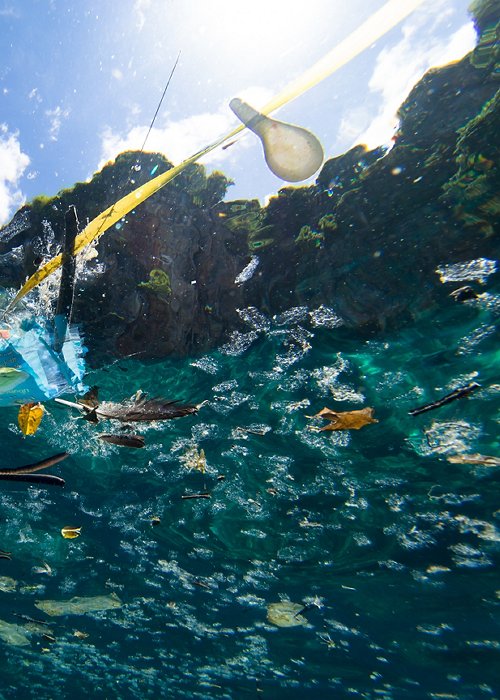
Oceans of plastic

It is estimated that each year about 8 million tons of plastic ends up in the sea… Staggering amounts, that add up over the years so that veritable “islands” of plastic are formed in the areas where marine currents converge. The largest island of this kind has been sighted in the Pacific Ocean and, although estimates on its real size vary, it is more or less the size of a country like Spain.
Larger-sized waste is what arouses the greatest outcry, even though lately there is a realisation that smaller and apparently insignificant fragments of plastic are even more harmful and dangerous: these are microplastics, which we will discuss further in the next few paragraphs.
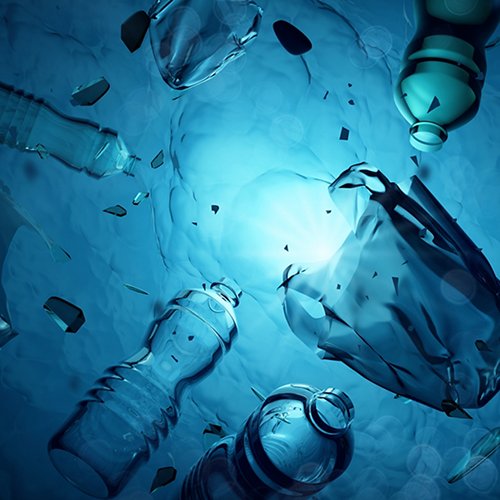
Let’s get to know microplastics
Conventionally, plastic waste is subdivided into four classes based on its size:
- macroplastics (>200 mm);
- mesoplastics (from 4.76 to 200 mm);
- medium-sized microplastics (diameters or lengths between 1.01 and 4.75 mm);
- small microplastics (diameters or lengths of <1 mm).
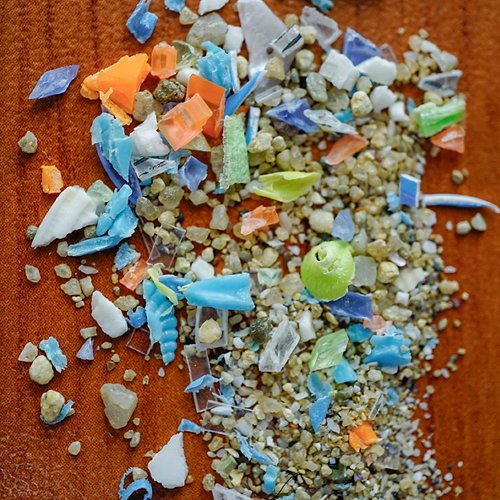
Added to these categories are nanoplastics: according to some authors, nanoplastics are defined as a fragment of plastic measuring less than 20 μm (microns, that is a thousandth of a millimetre; therefore: 1 μm = 1 × 10−6 m), while according to others they are less than 100 nm (nanometres, that is a thousandth of a micron; 1 nm = 1 × 10−9 m). Their very small dimensions make sampling by traditional methods impossible, and consequently we still know little about these plastics.
Microplastics are not only subdivided based on dimensions, but also according to their composition. Compounds that most frequently make up these plastics are polyethylene, polypropylene, polystyrene, polyethylene terephthalate and polyvinyl chloride, the original sources of which are mainly plastic bottles, food containers, fishing nets, disposable cutlery, plastic films and plastic cups.
Microplastics can also be classed according to morphology, often determined by the source from which they originate: pellets and microbeads (used in many everyday hygiene products), fragments deriving from the disintegration of larger-sized waste and fibres may be found in samples.
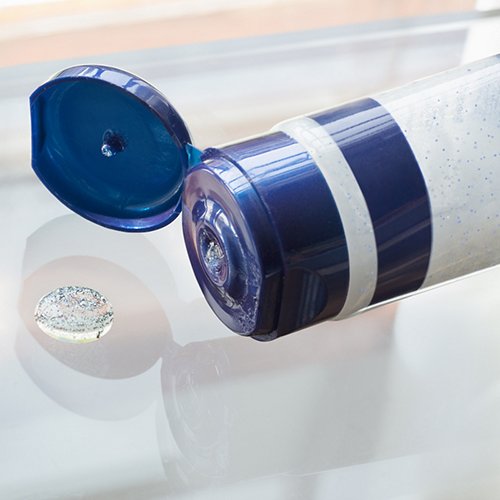
Origin of microplastics
Microplastics are classed as primary and secondary according to how they originate. The first are purposely made due to their microscopic dimensions, such as for example microbeads, used in scrubs, in some toothpastes and in many other cosmetic products, or raw materials like plastic pellets and powders used to make plastic materials.
Just think that a bottle of scrub may contain over 330 thousand plastic microbeads, which are drained directly into rivers, lakes and seas!
Secondary microplastics on the contrary originate from the disintegration of larger-sized waste and include both eroded fragments and fibres. This category includes microplastics deriving from degradation of larger plastic items into increasingly smaller fragments due to exposure to atmospheric factors, to the action of the sea and to ultraviolet rays. But not only from these. Clothes made from synthetic fibres, such as acrylic and polyester, shed thousands of microscopic fibres each time they are washed. Not to mention the microplastics deriving from abrasion of tyres when vehicles brake. Other microplastics can be generated from the wear of paints and varnishes, which contribute more than 10% of this microscopic ocean pollution.
Whether they derive from soaps and toothpastes or originate from wear of larger waste, what counts is that the water treatment plants are able to trap only the larger fragments, while microplastics succeed in passing through the filtering systems, thus draining into rivers and ultimately into the sea.
Plastic animals
Due to the vastness and depth of the seas and oceans, it is practically impossible to obtain precise data on quantities of waste polluting them. Some theoretical models estimate that there may be between five thousand and fifty thousand billion fragments, equivalent to over 150 million tons, without counting the plastic waste found on beaches or on the seabed.
The effects of plastic on marine fauna are well known. Some animals may become entangled in some waste, for example in pieces of fishing nets lost by boats, or they may mistake waste for food, often remaining suffocated. For example, turtles may easily mistakenly take plastic bags for jellyfish. With regard to microplastics, marine organisms may ingest microplastics in various ways: filter feeders, like mussels, oysters or clams, may simply become contaminated with the water that they filter to feed, while fish may ingest them both directly, mistaking them for prey, and by eating prey that already contains microplastics in their stomachs. Due to their limited size, microplastics do not spare any animal, from microscopic krill (small crustaceans that form the primary food source for many marine animals) up to the large predators at the top of the food chain, to arrive at ourselves through the food that we eat.
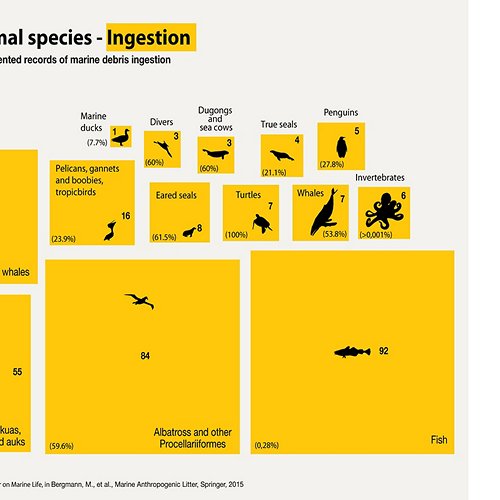
What raises most concerns is not so much the ingestion of microplastics, but rather the high concentrations of pollutants such as polychlorinated biphenyls (PCBs) and polycyclic aromatic hydrocarbons (PAHs), which may build up in them. Some research indicates that microplastics, after being eaten with food, may be transferred to tissues. It is therefore important to estimate average consumption. With regard to nanoplastics, these may penetrate into cells, with potential adverse consequences on health. Unfortunately, little is yet known about the effects of intake of nanoplastics into organisms, and further research and more data are indispensable.
Watch the moment plastic enters the food chain
What can be done?
Since 2015, fighting marine pollution is one of the sustainable development goals (SDGs), number 14 to be precise.
UNEP deems the problem of plastic in the seas and oceans to be one of the most serious environmental emergencies. If action is not immediately taken, by 2050 there will be more plastic than fish in our seas. To begin with, several laws have been introduced by individual states to solve the problem. For example, a law dated 2015 in the United States prohibits adding plastic microbeads to “rinse-off” products like toothpastes and skin creams. While this law does not include other cosmetics like make-up, it has inspired other laws elsewhere in the world. Indeed, our country has banned non-degradable cotton buds and has recently introduced the use of biodegradable bags and shoppers in all retail businesses. Our country, on the contrary, has banned non-degradable cotton buds and has recently introduced the use of biodegradable bags and shoppers in all retail businesses. Many other regulations are awaiting approval and in every Country in the world, this is only the beginning. However, virtuous conduct can be adopted even before they become required by law. Every one of us can do our little bit to limit the plastic that ends up in landfills and in the sea. First of all we can separate plastic waste from other refuse and correctly send it for recycling. Then we can refuse plastic cutlery when it is offered to us, drink from glasses without straws, choose food that is not packaged in plastic packs, use reusable containers to take water with us instead of buying small disposable bottles that pollute. Lastly, it may seem obvious but it is not, we can collect any plastic waste we come across when we are walking and put it in the plastic recycling containers provided. It is a gesture of civil conduct that others may decide to copy.
These are only some examples, much more can and must be done to fight plastic pollution. Certainly the battle against plastic is a global challenge, in which all the nations and all the citizens of the world are required to take part.
By Benedetta Palazzo
Read also...
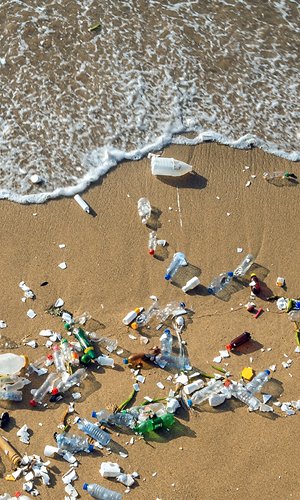
Years of plastics



